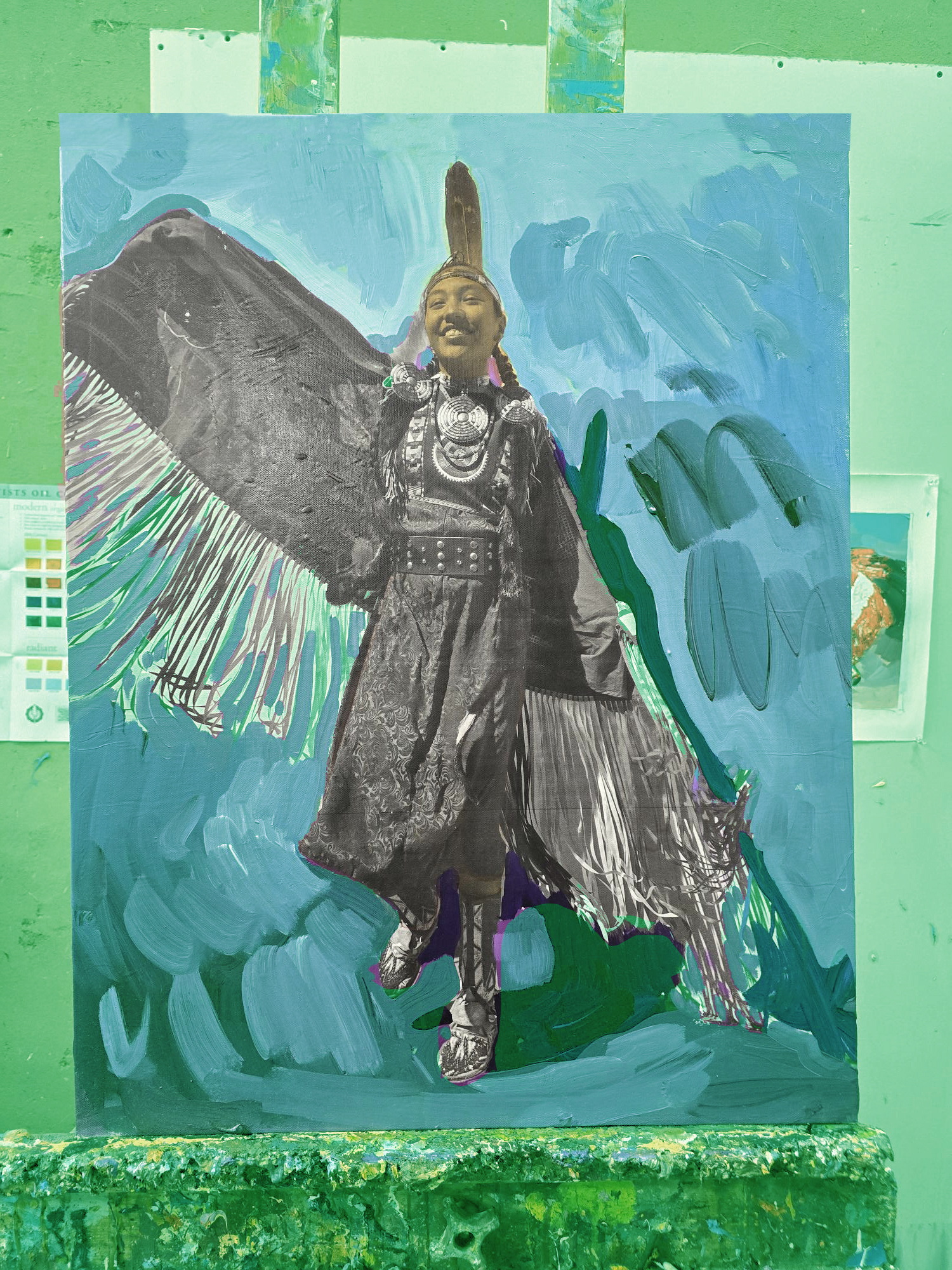
The Joy of Native Dance
Artist Mateo Romero, a Southern Keres Cochiti Pueblo tribal member, is known for bold, expressionistic paintings that explore the lives of Native communities and the sacred landscapes of the Rio Grande region. The artist spoke to us about his work on the Powwows: Celebrating Native American Culture stamps.
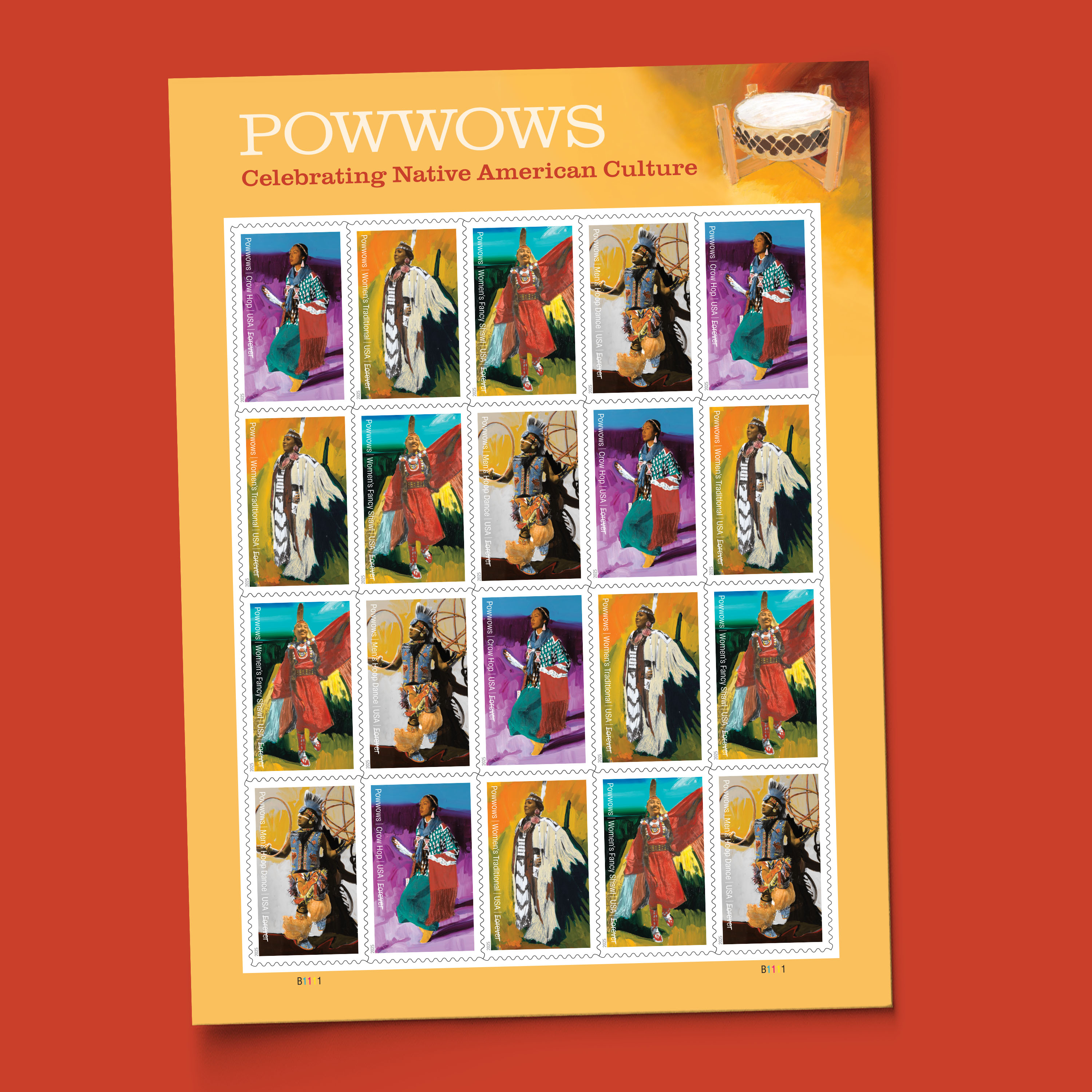
How did you come up with the process of combining photography with painting in your artwork?
I love the idea of using photography as part of the painting process. It has historical references to pop art with Andy Warhol and Robert Rauschenberg; it also has an element of portrait painting and portrait photography in it. Native painter James Lavadour said that a canvas is really just a place to hang paint. For me, the photo is the place that I hang paint.
The stamps showcase dancers in action, with your trademark expressionistic brushstrokes. How did you approach the challenge of capturing the dynamic motion and energy of powwow dancers within the constraints of the stamp format?
The mixed media photo collage/painting format is ideal for capturing the energy and movement of the dancer. The brush work, drips, splatters, and heavy paint all create a sense of the ecstatic energy of the dance. Using light tones and vivid color is a good way to activate the paintings when they are stamp-sized.
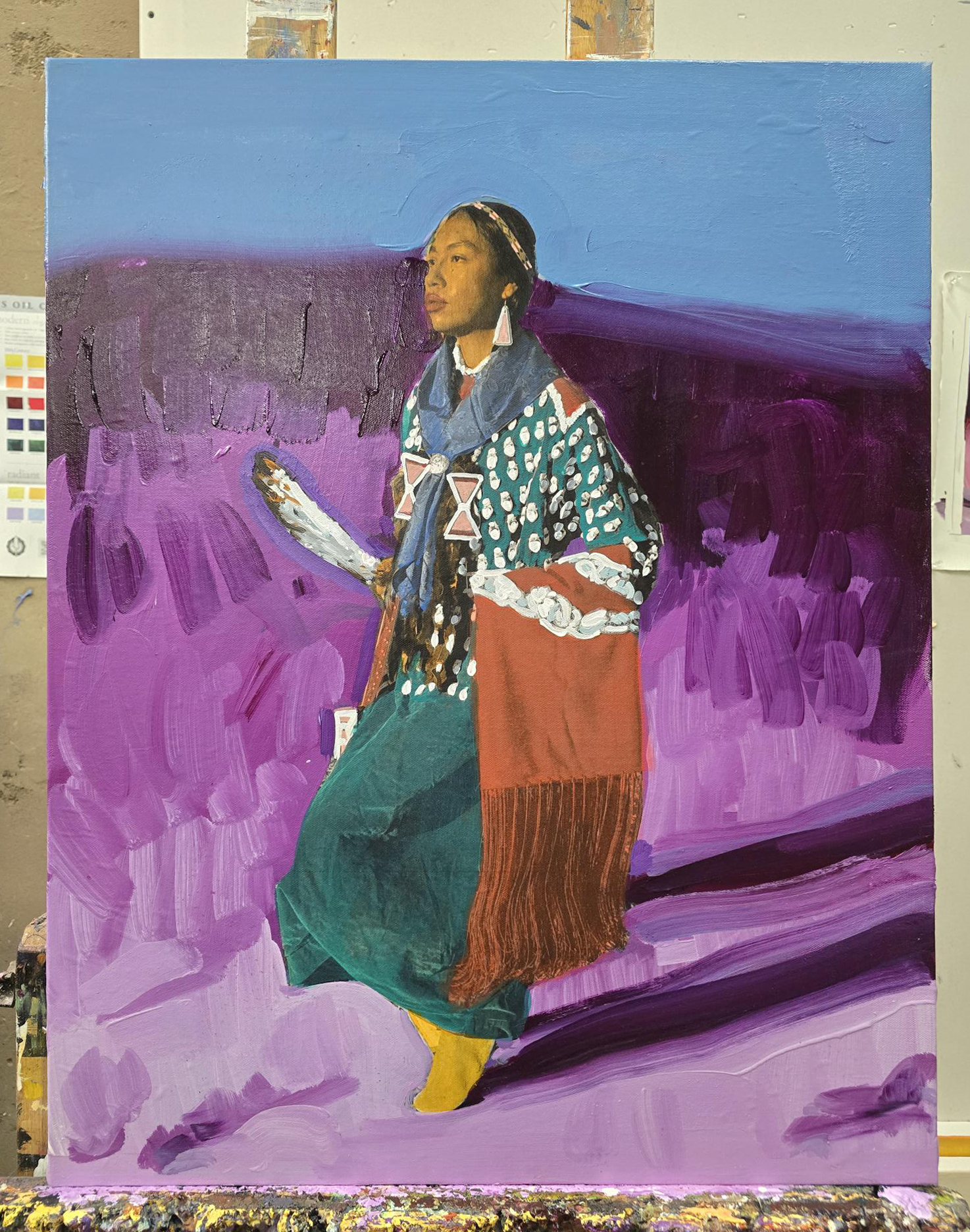
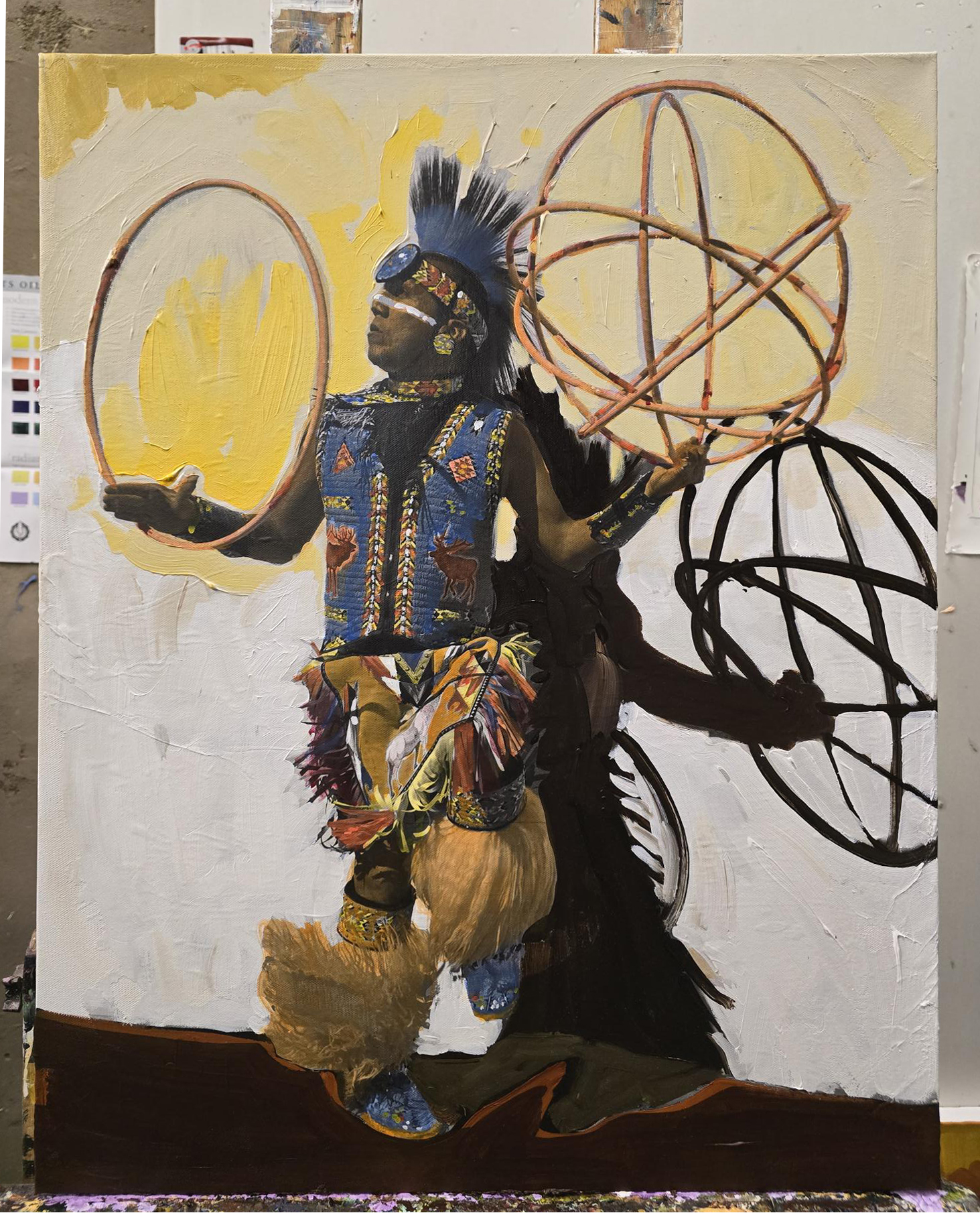

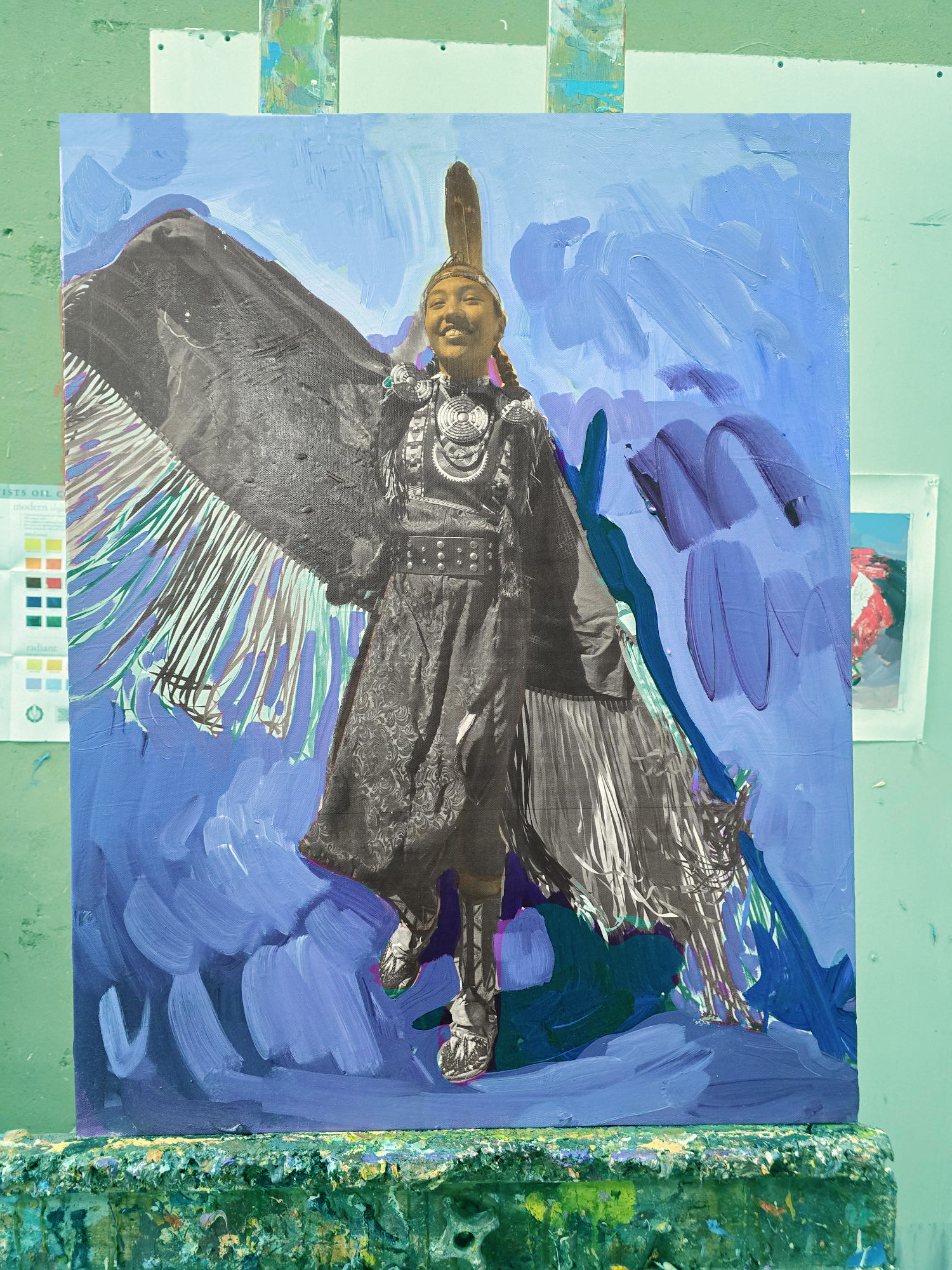
Powwows are rich in social, cultural, and ceremonial significance. How did you ensure that each image not only represented the dance but also honored the broader cultural context of the powwow?
As a Southern Keres Cochiti Pueblo tribal member, I realized there were limits to my understanding of Plains culture and the powwow community. We used independent Native curators with these areas of expertise as consultants to ensure the appropriateness of the dancers and dances.
How did your personal heritage influence the way you depicted the dancers?
I do feel a connection and affinity with Native dance. But dance is part of a larger human condition that transcends cultural parameters. For all people, dance can mean life, movement, energy, prayer, connectivity, and ceremony. I feel all of these aspects were present in the models we used for the stamp project.
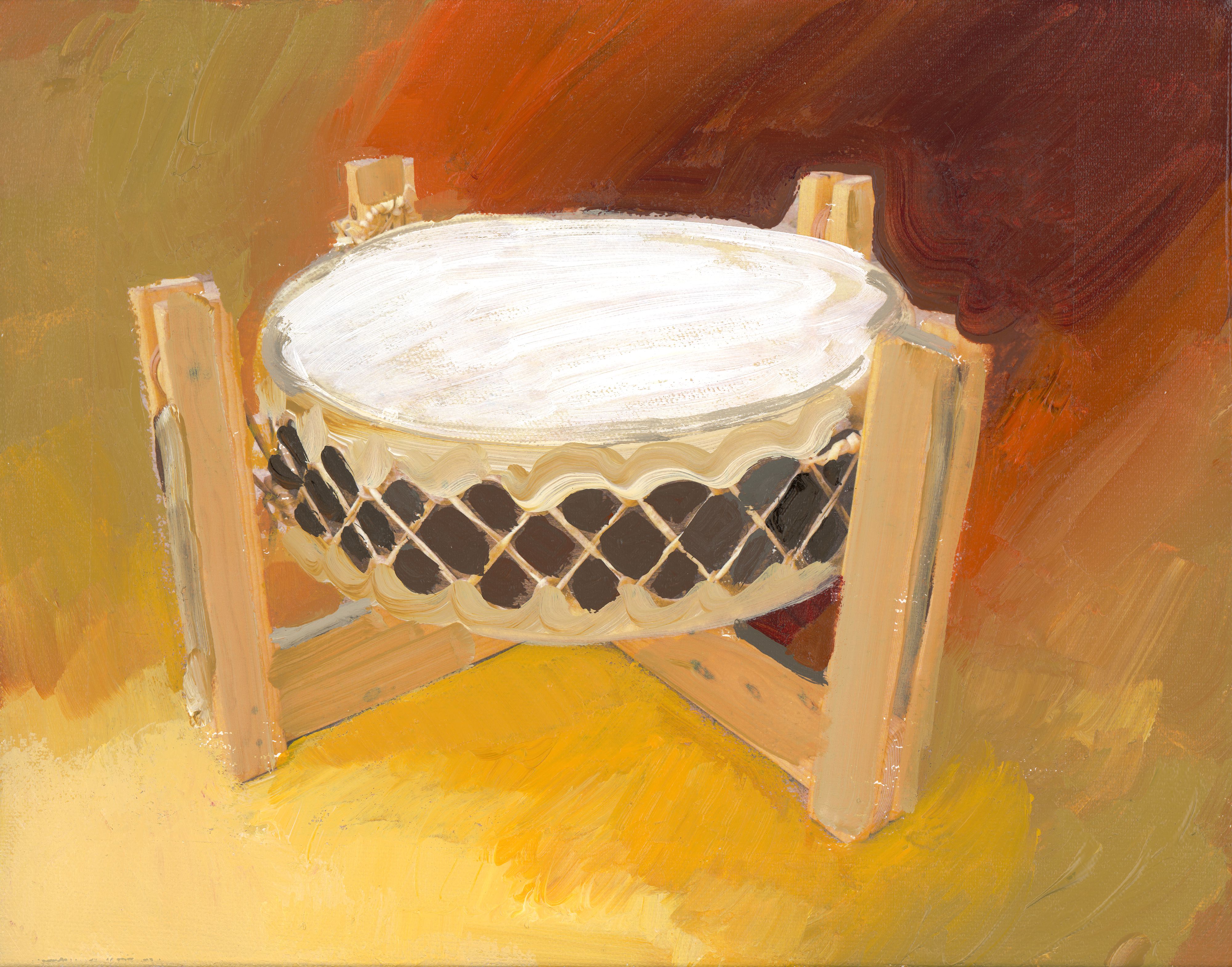
Given that these stamps will be seen by a wide audience, what do you hope people unfamiliar with powwows will learn or appreciate about Native American culture through these images?
The stamps will be seen by many people around the world. My hope is that they will show the world that Native people are vibrant and flourishing. The colors, movement, and celebratory nature of this work point to a human condition of joy, ceremony, spirituality, culture, and rebirth.
What does it mean for you to have your artwork represent Native American culture on a national scale, especially in a format that is so accessible to people across the country and around the world?
It’s a huge honor to be able to show the face of powwow culture to the world and take an art form like painting, with such historic ideas embedded in it, and transform it into a stamp. The essence of Native dance is that it’s alive, and I think these stamps are the perfect way of showing this.